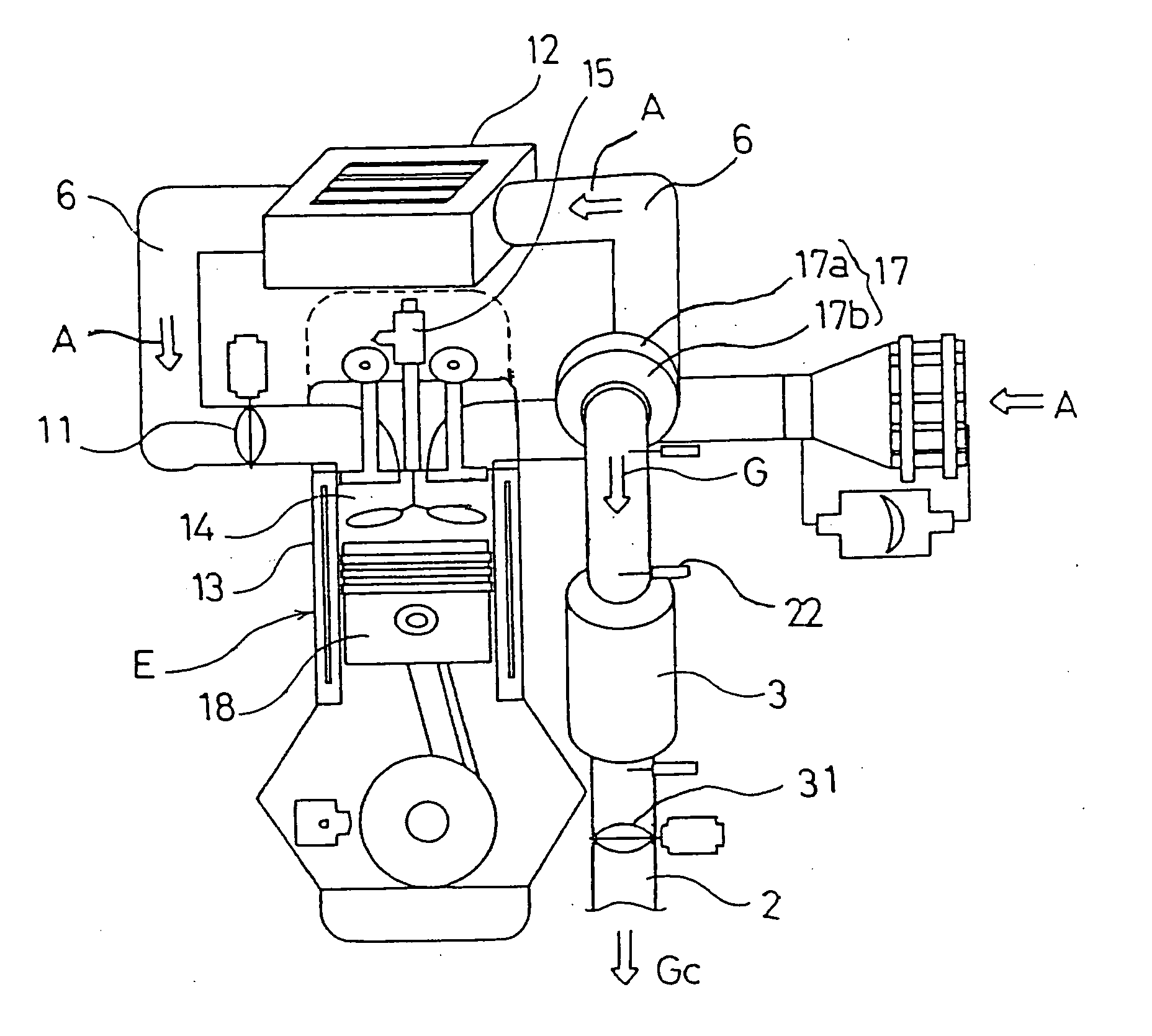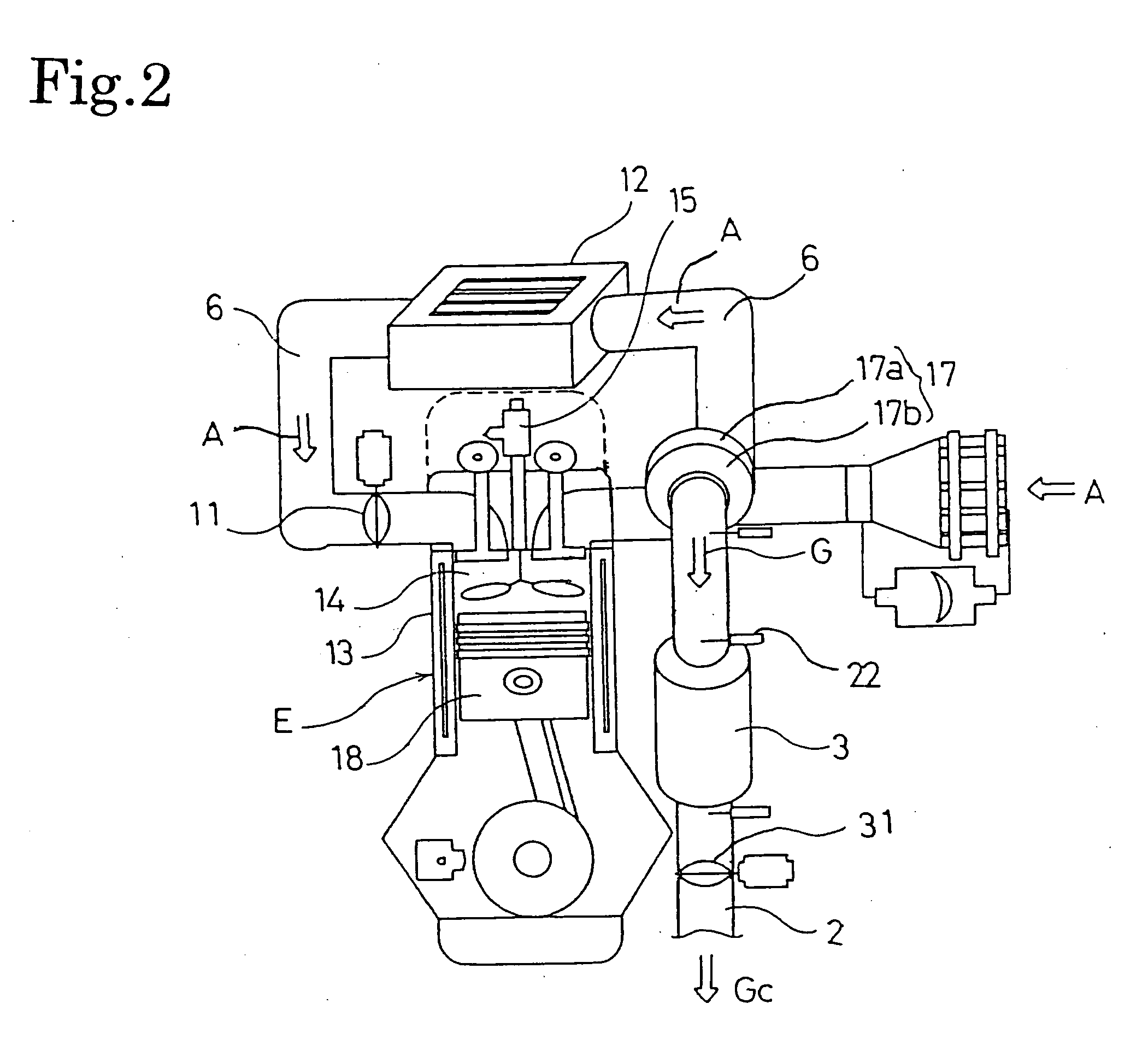Exhaust gas purifying system
a technology of exhaust gas and purification system, which is applied in the direction of machines/engines, mechanical equipment, electric control, etc., can solve the problems of melting loss, fuel consumption deterioration, and the improvement of an engine cannot respond to the enhancement of legal restrictions, so as to increase the quantity of residual exhaust gas, raise the exhaust gas temperature, and raise the exhaust pressure of an engine
- Summary
- Abstract
- Description
- Claims
- Application Information
AI Technical Summary
Benefits of technology
Problems solved by technology
Method used
Image
Examples
Embodiment Construction
[0051] An exhaust gas purifying system of an embodiment of the present invention is described below by referring to the appended drawings. In this case, an exhaust gas purifying system with a continuously regenerating type DPF (diesel particulate filter) that comprises of the combination of an oxidation catalyst (DOC) and a catalyst-provided filter (CSF) is described.
[0052]FIGS. 1 and 2 show a configuration of an exhaust gas purifying system 1 of this embodiment. In this exhaust gas purifying system 1, a continuously regenerating type DPF 3 is set in an exhaust passage (exhaust pipe) 2 connected to an exhaust manifold of a diesel engine E. The continuously regenerating type DPF 3 is constituted of the oxidation catalyst 3Aa at the upstream side and the catalyst-provided filter 3Ab at the downstream side.
[0053] A honeycomb structure of porous ceramic and the like supports an oxidation catalyst such as platinum (Pt), which forms the oxidation catalyst 3Aa. This catalyst-provided fil...
PUM
 Login to View More
Login to View More Abstract
Description
Claims
Application Information
 Login to View More
Login to View More - R&D
- Intellectual Property
- Life Sciences
- Materials
- Tech Scout
- Unparalleled Data Quality
- Higher Quality Content
- 60% Fewer Hallucinations
Browse by: Latest US Patents, China's latest patents, Technical Efficacy Thesaurus, Application Domain, Technology Topic, Popular Technical Reports.
© 2025 PatSnap. All rights reserved.Legal|Privacy policy|Modern Slavery Act Transparency Statement|Sitemap|About US| Contact US: help@patsnap.com



